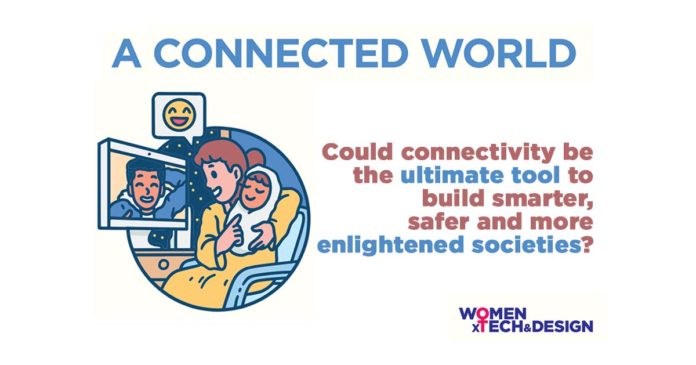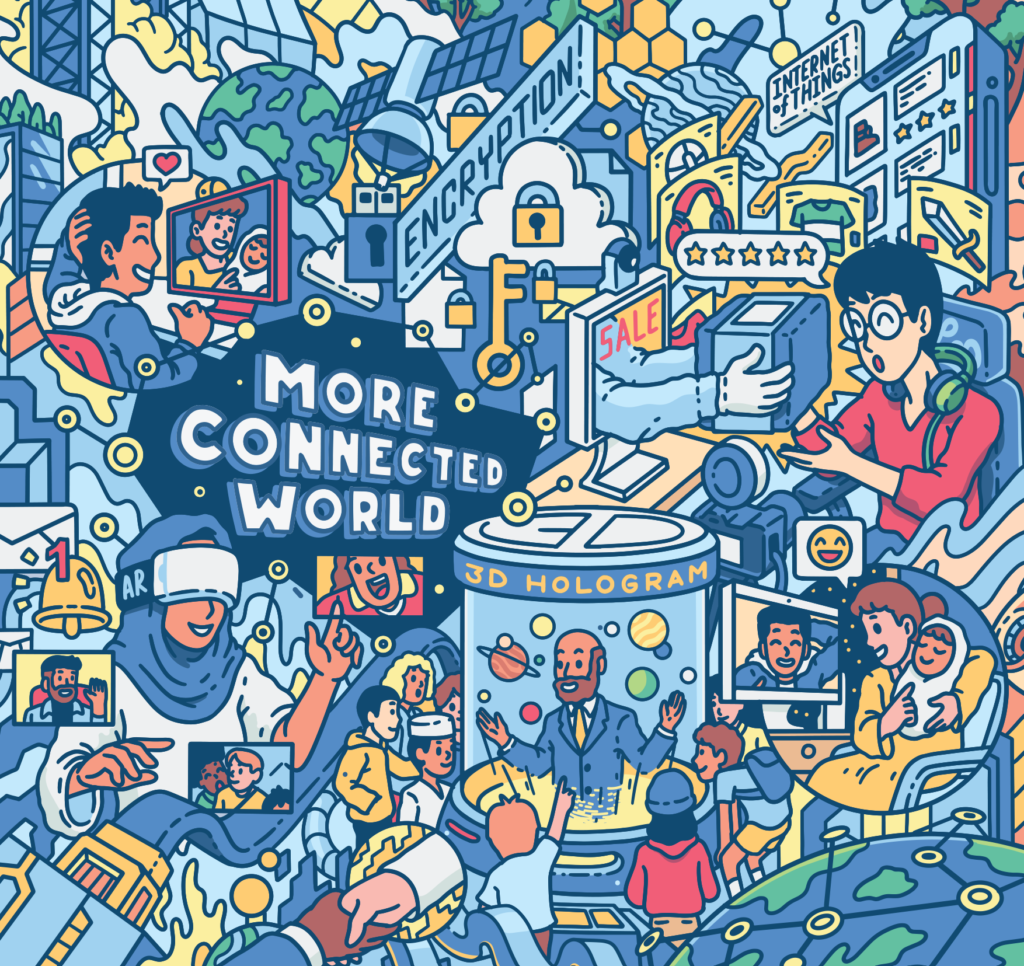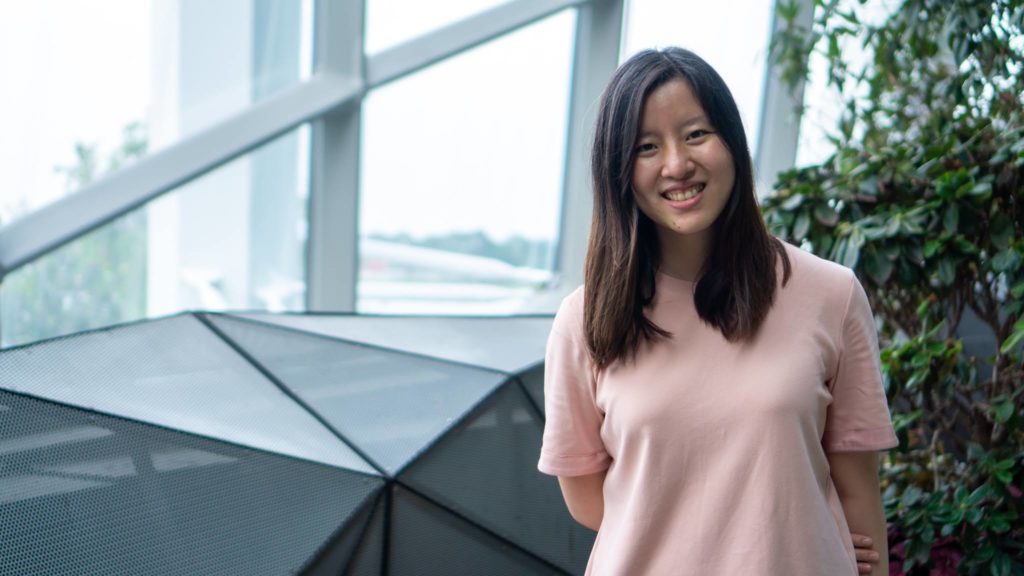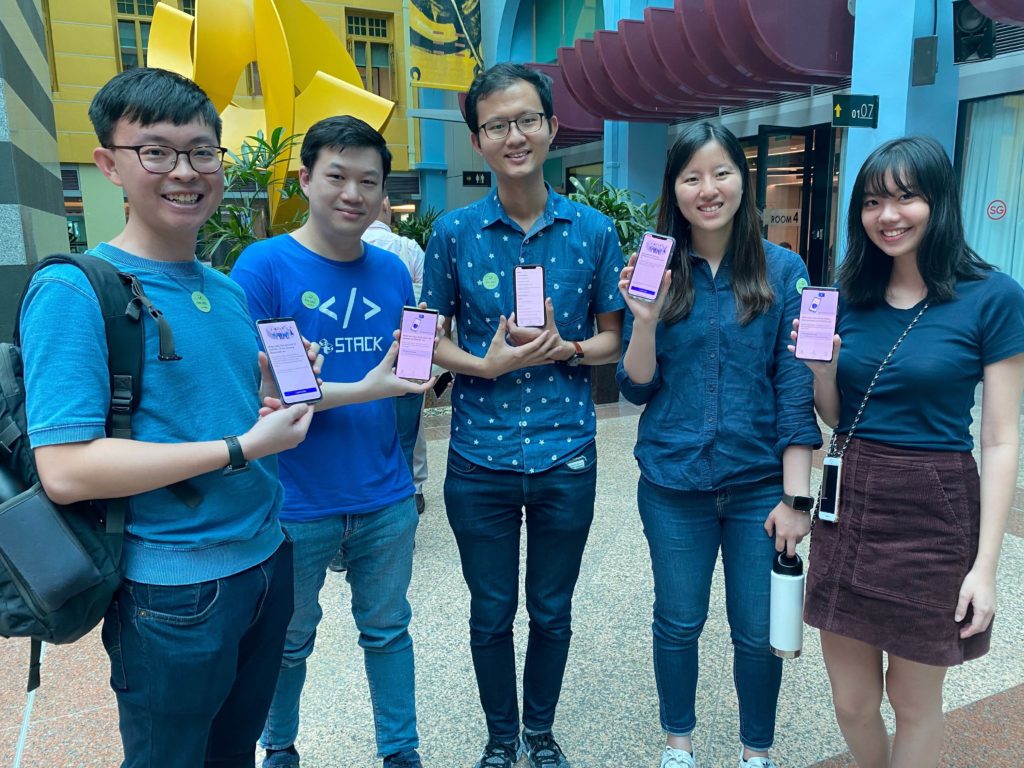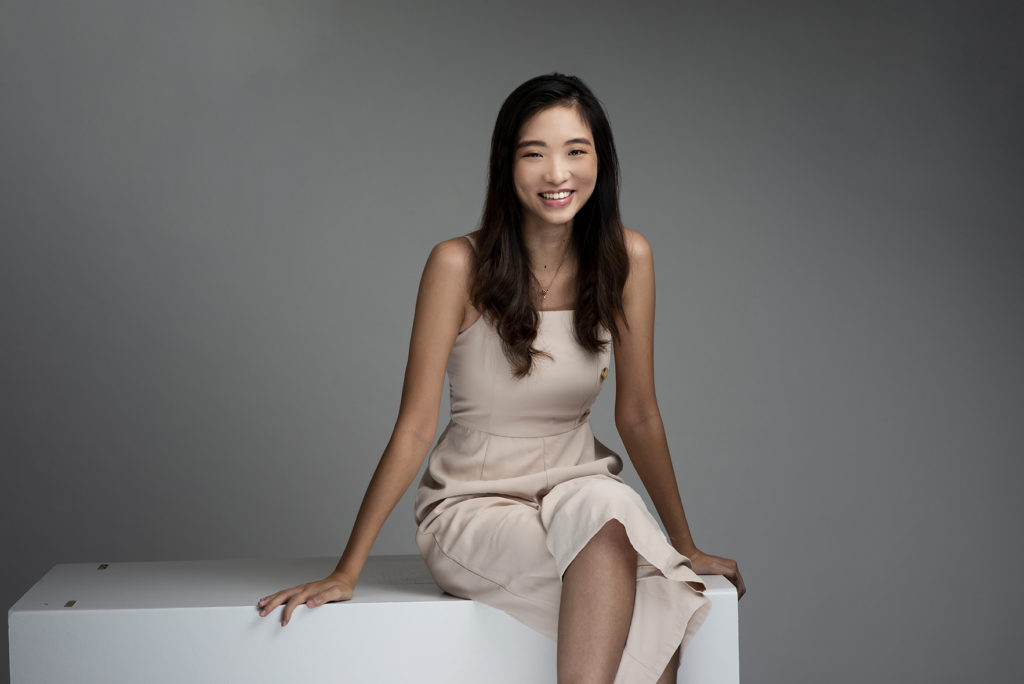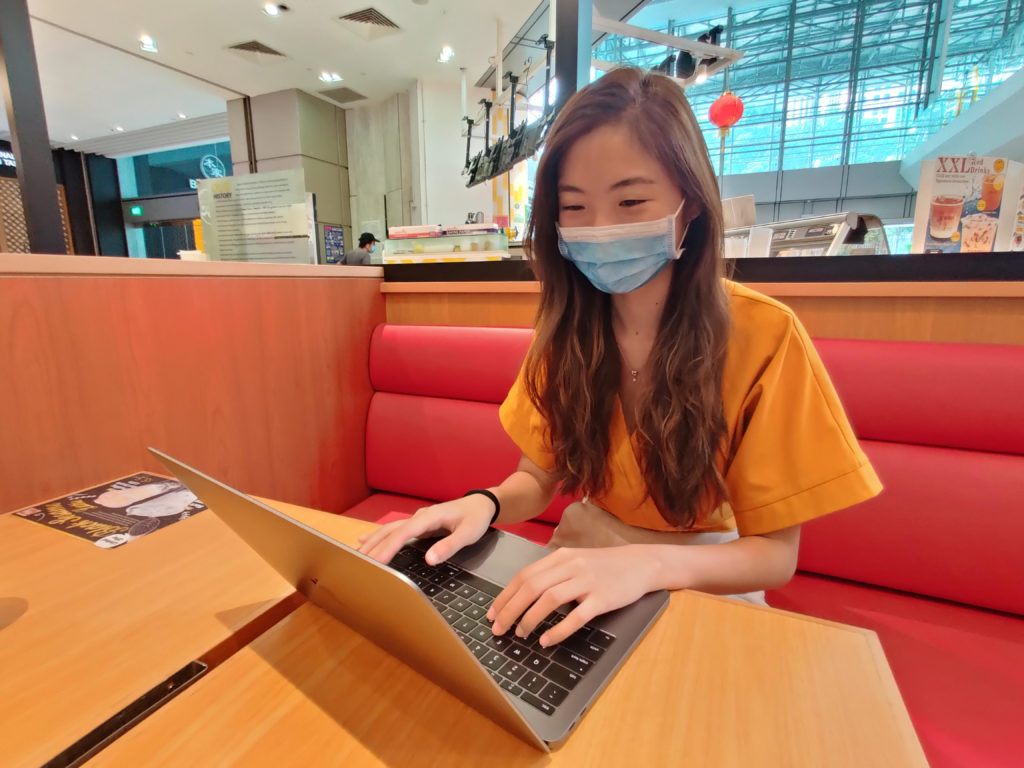As the world becomes more digitised than ever, being connected seems like a natural
consequence. Our devices, networks and systems are all constantly “talking” to each other over cyberspace, and maintaining this vital connection is a large part of keeping our modern world running, and driving its future digital development.
Could connectivity be the ultimate tool in our quest to build smarter, safer and more enlightened societies? Could you be the female innovator who leads the next great leap in computer science technology?
Can technology slow down the spread of a pandemic?
Staying connected has never been as important as it is today – especially in times of crises, such as the COVID-19 pandemic. In 2020, there was a call for volunteers to implement a digital solution to curb the spread of the virus. Rising up to the challenge, SUTD alumna Janice Tan came together with a group of software engineers and designers to work on developing one of the first national contact tracing solutions – the TraceTogether app.
Janice Tan
Computer Science and Design (CSD), Class of 2016 (formerly from St. Andrews’ Junior College)
Current Software Engineer at GovTech Singapore
“I remember it was during the Chinese New Year period – a time where news of rising numbers COVID cases was prevalent, and nobody seemed to know how to respond to this incoming crisis. I was intrigued by the idea that technology could possibly play a part in stopping the spread of COVID,” says Janice. Understanding that they were racing against the clock, the team managed to launch the first version of the app just eight weeks after they started development.
But this was no easy feat. Not one person on the team had worked directly with the Bluetooth stack before, and there was so much to figure out – the intricacies of Bluetooth on mobile operating systems, how the protocol would work, and how to architect privacy-preserving mechanisms. There were many technical hurdles the team had to overcome, especially since it was not trivial testing the stability and accuracy of Bluetooth exchanges across multiple operating systems and devices.
Janice and the rest of the TraceTogether team.
Despite achieving what seemed like the impossible, Janice and her team remain humble about their success. After receiving requests from international collaborators to share areas of knowledge and lessons learnt, the team decided to publish their BlueTrace Protocol on bluetrace.io to share the design and engineering considerations behind the protocol running on TraceTogether.
Janice’s story might seem to be one of success but it was also a journey of learning and growth as her team explored the use of new technologies to solve a real-world need.
Moving Towards a New Era of Connectivity
Our devices and their systems unlock an unprecedented level of interconnectedness. For
someone like Glenda Wee, this increasing usability of technology allows us to maximise the
benefit that a single piece of technology can bring to people.
Glenda Wee
Computer Science and Design (CSD) Class of 2021 (formerly from Raffles Institution)
Current Doctor of Medicine (MD) Student with Duke-NUS Medical School and Volunteer UX Designer with GovTech
“It’s important that we do not leave any group behind, so we can all enjoy the benefits of
technology together,” says Glenda. Just recently graduated in September 2021, the SUTD alumna had also recently volunteered as a UX designer with GovTech working on the app, SupplyAlly which facilitates distribution of essential items to the Singapore population during the pandemic.
Glenda’s time in SUTD has given her a multi-dimensional perspective on what it means to create a great technological solution. She believes that the most effective solutions need not be born from the most cutting-edge technology. In fact, simple solutions can often affect the same positive outcome and can even be more beneficial due to its wide accessibility.
“The dynamic skills I have learned in SUTD are a great starting toolbox for enabling me to know how to identify gaps and solve them, from the ideation process all the way to the prototyping phase,” says Glenda. As a firm believer that passion can drive one to achieve the amazing, she found that SUTD’s projects and modules had enabled her to discover the power of technology in improving everyday lives.
Glenda has been recognised in the 2021 Singapore Girls in Tech List, one of 18 young talents on the inaugural edition. A recent graduate from the pioneer batch of the SUTD-Duke-NUS Special Track, she is now pursuing her Doctor of Medicine (MD) studies with Duke-NUS medical school.
Helping build better, faster and more powerful networks will benefit everyday people and the community, as we continue to build a more cooperative, collaborative and more connected world.
Data and design have allowed for connectivity to make leaps beyond the unthinkable. And with SUTD’s CSD programme, you will learn that it is not just about software, hardware, computing systems or infrastructure. It is about designing more human-centric and intelligent systems that integrate all the technologies to best fit user experiences and meet socioeconomic goals. That’s one of the many ways design can truly deliver value to the world.
If the thought of being an innovator in this field who helps build a better world excites you, find out more about CSD here.
Like what you just read?
Have a query for our students and/or Admissions Team? Speak to them here!
Find out what student life and Freshmore year is like in SUTD.
Find out more about some of the scholarships and financial aid schemes available at SUTD.
Rewatch our talks and join our post-Open House programmes on our Open House website!




















